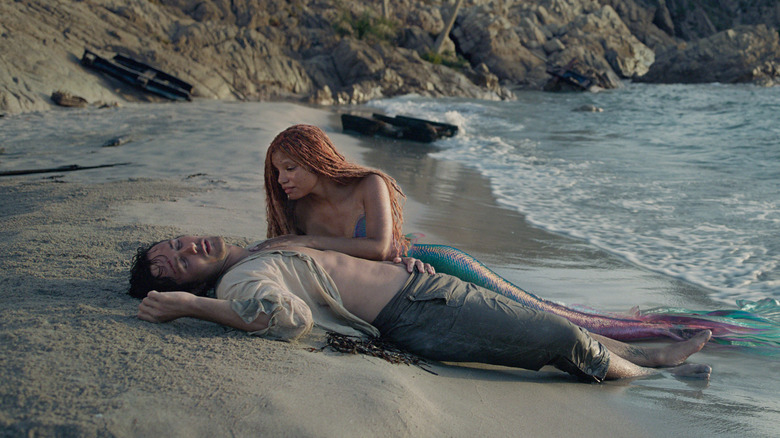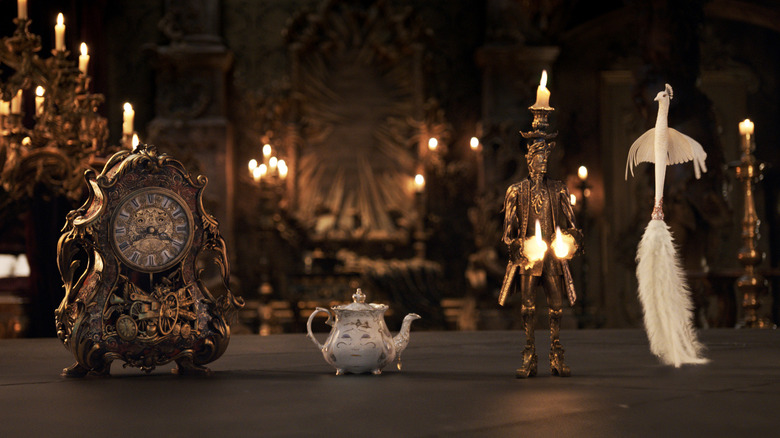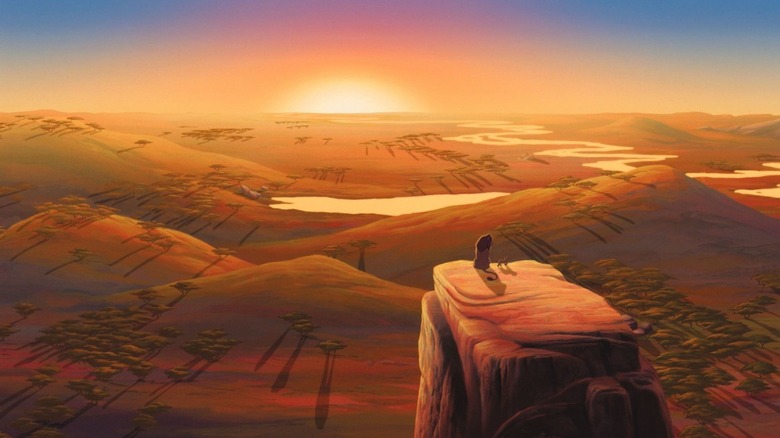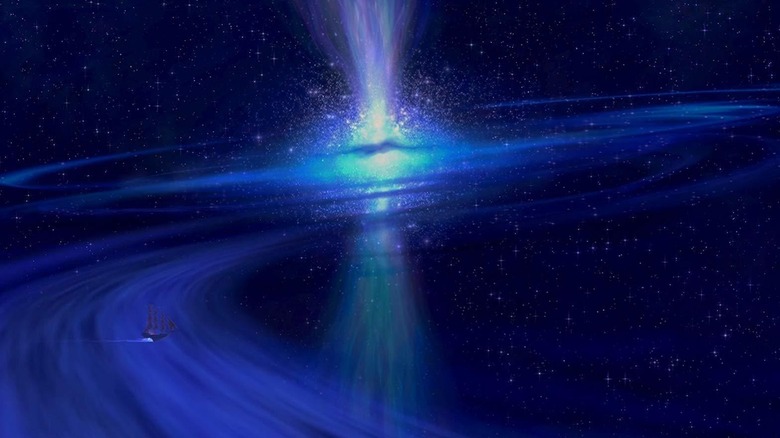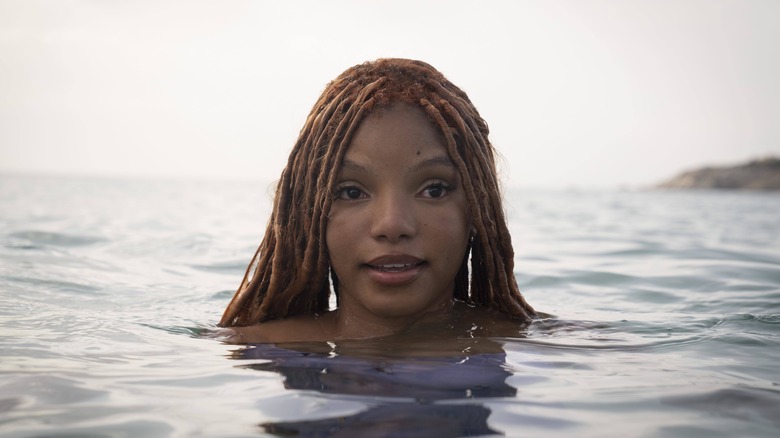Every Live-Action Disney Remake Has The Exact Same Problem
In modern Hollywood, remakes make the world go round. And from "The Jungle Book" to "Aladdin" and now "The Little Mermaid," Disney has been at the forefront of the double-dipping game. The company's massive collection of animated classics has become a treasure trove for CGI regurgitation, and Disney has quadrupled down on these live-action remakes as a core pillar of its current cinematic schema.
Whether or not that's been a good choice is up for debate. There have been definite highlights, like bringing a bit of diversity to ensembles that were previously overwhelmingly white. And there's no doubt that Disney has assembled immense talent for each one of its live-action remakes. From a financial perspective, the films have mostly been huge successes. Despite all that, the public sentiment toward them has oscillated from middling to downright hostile over the years. It's not hard to understand why — dumping a couple hundred million dollars into a live-action redux of a beloved classic is about as blatantly business-minded as you can get. For the most part, the movies have been shrugged off by critics, even when they sweep the box office.
Accusations of laziness, unoriginality, and a gross shareholder mindset have all been leveled at the adaptations, but there is a larger, unifying problem that permeates each and every one. Put simply, the live-action Disney remakes look ugly compared to their animated predecessors. No matter how much cash the studio dumps into CGI, it can't compare to the visual magic of the originals.
The Disney remakes look expensive but lack style
You can do a lot with computer animation. But should you? How much is too much? How far is too far? One could argue that creating an entire film's worth of CGI animals and locales, as Disney did with its "Jungle Book" and "Lion King" remakes, negates the moniker of "live-action" entirely. But hey, at least they look stunning ... right?
In fairness, that's a subjective question. Beauty is in the eye of the beholder, after all. But at the risk of being too objective here, no, the CGI decadence of the recent Disney remakes is in no way superior to the original animation. This is particularly evident in movies where human characters aren't the focus, like the aforementioned "Lion King" redux or "Lady and the Tramp," which ooze uncanny dog valley in every shot. But it's also true of the more human-centric films. Take "Beauty and the Beast," filled with horrifying monstrosities of sentient furniture, or "Aladdin," with its magical cave so lush you can practically taste the green screen.
The goal of a Disney film is to create magic — to transport you to a mystical, impossible place. The live-action Disney remakes certainly look expensive — there's no question of their extravagance or technological advancement — but it's the money, not the magic, that's apparent in every shot. In their best moments, they have a definite wow factor. But inevitably, they also hit lows, revealing their visuals for the costumed Disneyland singalong performances they really are.
The original Disney movies were created with traditional animation in mind
Adaptation is always a tricky thing, whether you're turning a book into a TV series or a traditional animated film into a modern live-action extravaganza. Inevitably, there will be changes. There will be cuts, tweaks, and additions. If there weren't, what would be the point?
Sometimes an adaptation can thrive and find new power in those changes. But more often than not, you lose more than you gain. Every Disney animated classic that the company has tried to remake was conceived first as a piece of visual art. They were dreamed up by animators and storyboard artists. Every musical number and action set piece, every tender moment, was designed with the medium in mind. And every time the company tries to bring those moments to live action, it has to shove a square-shaped peg into a CGI hole.
Whether it's the magic carpet ride, Cinderella's transformation, Mufasa's death, or the Bare Necessities, Disney loses something ethereal when making these visual moments "real." Some of the remakes have found more success by distancing themselves from the source material — "Mulan" stands out as a great example — but even then, it's hard not to miss the bright, colorful, impossible style that full animation allows. Of course, that's part of the point. Because animation is for children, and CGI is for adults. Right?
Disney needs to stop viewing animation as a lesser medium
There is a great blight on the American entertainment industry. Okay, there are many, but we're not here to talk about superhero fatigue, David Zaslaz, or the morally disgusting practice of reviving dead actors through CGI and deepfakes. We're here to talk about animation, and how the vast majority of American moviegoers and studio executives view it as a lesser medium suitable only for children.
One need only look at how popular Japanese anime has become in America over the past decade to understand this phenomenon. In many parts of the world, animation is for all ages and all types of people. But because it's so scorned here, those who love it have to import it from elsewhere. That's not so bad, really, since there's a bounty of incredible anime released every year. But it's still sad that so many Americans don't see the value in traditional animation. The modern boom of live-action Disney remakes is perhaps the most vivid manifestation of that disconnect.
Why do we keep getting CGI reimaginings? Because they keep making money. And why do they keep making money? Because live-action films are widely viewed as blockbuster events that animated features can never be. Because morphing "The Lion King," a gorgeous masterpiece, into a gaudy photorealistic mess is somehow supposed to make it more mature, or artistic, or mass marketable. This idea is gross, and it's just plain wrong. Please, Disney, stop discrediting the medium that built you. Stop treating animation like it's nothing more than a toy for children and start giving it the respect it deserves.
How can Disney fix its live-action remake dilemma?
"The Little Mermaid" is Disney's latest foray into the world of live-action reimaginings, and it's also one of its most hyped. And there are definite things to love about it — in particular, the infinitely talented Halle Bailey. But it has the same visual issues that have plagued this endeavor since the beginning. At times, Ariel's mermaid world comes to life in stunning color, but more often than not it's an undulating mess of CGI mush that lacks the undersea magic of the original.
So what's the solution? As long as these remakes keep making bank, Disney will keep pumping them out. We'll be down to "Dinosaur" and "Meet the Robinsons" in no time, and it would be great if the company started fixing these problems before it gets there. Maybe further differentiation is the answer. Maybe we need bigger departures from the source material. Maybe Disney should focus less on CGI "realness" and more on the infinite possibilities of creative, stylistic animation.
One thing is for sure: Without a course correction, these movies will continue to face the same line of criticism. Let's hope we won't be back here in five years watching the live-action "Tarzan" remake, absent the cool Tony Hawk vine-skating and majestic jungle landscapes — just Henry Cavill in a loincloth talking to some poorly lit CGI gorillas while a somber Phil Collins cover plays in the background. Disney, please do better.
